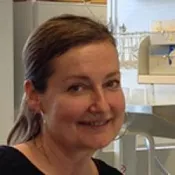Enzymatic catalysis
Enzymes used for industrial catalysis (also called biocatalysts) have to meet a great number of requirements. They originate from living organisms, usually microorganisms, and they have a basic function to transform specific biological substances inside that organism, so that the transformed molecules can be used in metabolism. To be used industrially they must become robust enough to tolerate an environment far removed from their natural setting. Often the enzymes also need to be modified to perform the exact required reaction, which might differ considerably from its original function. When developing a new bioprocess, it is common to need to modify and evaluate the function of the enzyme several times before the right one is found. Sometimes a whole system of different enzymes is needed to get the right reaction.
In order to ensure that certain basic characteristics of the enzymes are appropriate, the enzymes can be obtained from microorganisms that live in various environments. For example, if an enzyme is needed that can tolerate high temperatures, it could be obtained from a type of microorganism that naturally occurs in geysers.
From an industrial perspective, one well-designed enzyme or system of enzymes can be very attractive, as the final processing does not involve complete cells and can therefore be adapted relatively easily for use within the traditional chemical industry.
Researchers in this field at Lund University

Patrick Adlercreutz
Email: patrick [dot] adlercreutz [at] biotek [dot] lu [dot] se

Eva Nordberg Karlsson
Email: eva [dot] nordberg_karlsson [at] biotek [dot] lu [dot] se

Henrik Stålbrand
Email: henrik [dot] stalbrand [at] biochemistry [dot] lu [dot] se

